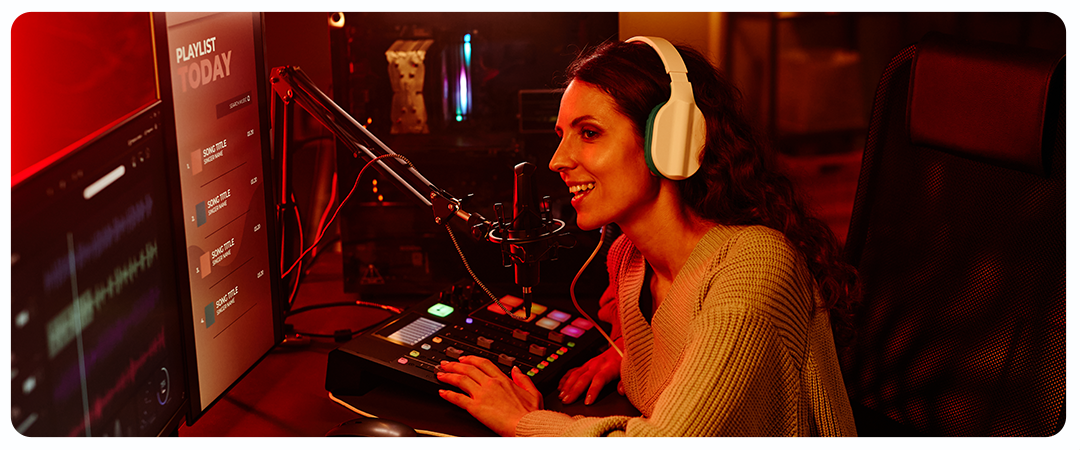
The Dutch Radio market is a blend of established public broadcasters (NPO) and vibrant commercial stations, alongside a rapidly growing digital audio scene. While overall listenership remains strong, the way people listen is evolving. Streaming and podcasts are increasingly popular, particularly among younger and more mobile demographics, which often includes our target group of business leaders and travelers.
To effectively use Netherlands radio ads, we must look beyond broad listenership figures. Business leaders might tune in during their commute for news updates, investors might follow specific financial programs, and affluent travelers could be listening to stations that align with their lifestyle, perhaps during leisure time or travel. Understanding these specific listening patterns is crucial for maximizing impact and avoiding wasted ad spend.
Pinpointing the Right Channels: Top Stations for Influential Listeners
Selecting the right station is paramount. While precise, real-time data on the listening habits of only CEOs or frequent first-class flyers can be elusive without commissioning bespoke research, we can make highly informed decisions based on station formats, established audience profiles, and programming content. Based on available data and industry knowledge, here are five stations that consistently emerge as strong contenders for reaching business leaders, investors, and affluent individuals in the Netherlands:
- BNR Nieuwsradio: This is arguably the most direct channel. As the Netherlands' primary commercial news and business station, its programming is inherently tailored to professionals, decision-makers, and those interested in finance and economics. Advertising here places your brand directly within a context of business intelligence. Data consistently shows a high concentration of business listeners and higher-income demographics among its audience.
- NPO Radio 1: The leading public news and current affairs station. While its audience is broader than BNR's, it commands significant reach and credibility. It attracts listeners seeking in-depth analysis, interviews, and discussions on national and international events – content highly relevant to business leaders and informed investors. Its reputation for quality journalism lends credibility to advertisers.
- NPO Radio 4: The public classical music station. Classical music audiences often correlate strongly with higher education levels, professional occupations, and affluence. For brands targeting a sophisticated demographic, including potential investors and culturally inclined travelers, NPO Radio 4 offers a refined environment, often with less commercial clutter than other stations.
- Sublime: Focusing on jazz, soul, and funk, Sublime targets a modern, urban audience often associated with higher disposable income and an appreciation for culture and lifestyle. While not strictly a business station, its audience profile aligns well with segments of the affluent traveler and culturally engaged professional demographic.
- Qmusic / Radio 538: While primarily mainstream pop stations, their sheer reach, especially during peak commuting times (drive time), cannot be ignored. For broader campaigns aiming for high awareness among a wide segment of the population, including professionals commuting to work, these stations offer significant scale. Strategic placement of ad spots on radio Netherlands during specific news segments or drive-time shows can capture the attention of business listeners within this larger audience.
Disclaimer: Listener data evolves. Always consult the latest figures from sources like the Nationaal Luister Onderzoek (NLO) or specific station media kits when planning your campaign.
Crafting Your Dutch Radio Advertising Strategy
Simply choosing a station isn't enough. How you use the airtime matters.
- Ad Formats: Standard radio commercials Netherlands (spot ads) offer reach, but consider sponsorships of specific programs (e.g., a financial segment on BNR) or live reads by trusted presenters for enhanced credibility, especially valuable when targeting skeptical investors or busy executives.
- Pricing & Buying: Understand the radio advertising rates Netherlands. Direct buys allow for negotiation and securing specific placements, crucial for targeting niche programs. Programmatic audio buying is gaining traction, offering data-driven targeting across digital streams, potentially reaching listeners based on online behaviors indicative of wealth or business interests. Evaluate the cost of radio advertising in Netherlands for different approaches against your campaign goals.
- Targeting: Go beyond demographics. Use daypart targeting (e.g., morning/evening commutes for business listeners) and program targeting (aligning ads with relevant content like business news or travel segments). Consider targeted radio ads Netherlands that leverage digital capabilities for more granular segmentation.
Uncovering Opportunities: Addressing Unmet Needs
Where can advertisers innovate? Consider the specific needs of international business travelers or expatriate investors in the Netherlands. Are there dedicated programs or segments addressing international finance, cross-border business challenges, or luxury travel? Sponsoring or even co-creating such content could fill a gap. Furthermore, local radio advertising Netherlands, particularly around major business hubs like Amsterdam's Zuidas or Rotterdam's port area, could offer highly targeted reach to professionals concentrated in those zones, perhaps through regional stations or localized digital streams. Think about providing genuinely useful information – market updates, travel tips, investment insights – integrated into your advertising message.
Final Thoughts: Tuning In for Success
Radio advertising in the Netherlands remains a potent tool for connecting with influential and affluent audiences. Success hinges on a strategic approach: selecting the right stations based on informed analysis, choosing appropriate formats and targeting methods, understanding costs like Netherlands radio ads cost, and importantly, crafting messages that resonate with the discerning ears of business leaders, investors, and global travelers. By moving beyond generic buys and focusing on targeted, contextually relevant placements, your brand's voice can cut through the noise and achieve significant impact.


